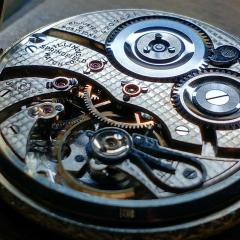-
Recently Browsing
- No registered users viewing this page.
-
Topics
-
Posts
-
The hairspring looks to be in good condition from the photographs, it is natural that the balance will perform slightly differently in different orientations. Assuming there is no damage, the difference may be caused by the balance moving relative to the jewels, not the hairspring itself. So too much space between the jewels (endshake) and the difference will be greater, if one jewel is oiled and the other not, then again a lower amplitude in one position than the other....and so on. If the difference is reasonable (like your 13 seconds) the the best thing to do is to make one position slightly fast (+7 seconds, and the other position slow -7 seconds) then this averaging of the error will make for a more accurate watch in use. If the difference was much greater eg 100 seconds, then you would need to troubleshoot the problem. Additionally, you need to let the watch run-in for 24-48 hours after a service to allow the new oils to work their way in to all the jewels and pivots etc before you make a 'real' timegrapher test, otherwise you can get strange results. For example the oil in the top shock setting may be evenly spread, but not (yet) in the bottom setting = high difference.... after 24 hours this oil will probably have sorted itself out and the difference may be much better.
-
I'm also rather impatient, but when you have your head down and are in the zone 4 hours feels like 10 minutes, my wife often jokes that I have watches and clocks all around me, but no concept of time once I 'get in the zone'
-
By Neverenoughwatches · Posted
Something along those lines yes. So are you implying HectorLooi is a Swiss spy working for Bergeon to see what crap they can get away with selling us ? -
Thank you for your introduction and welcome to this friendly forum. We all look forward to your contributions and continued involvement.
-







Recommended Posts